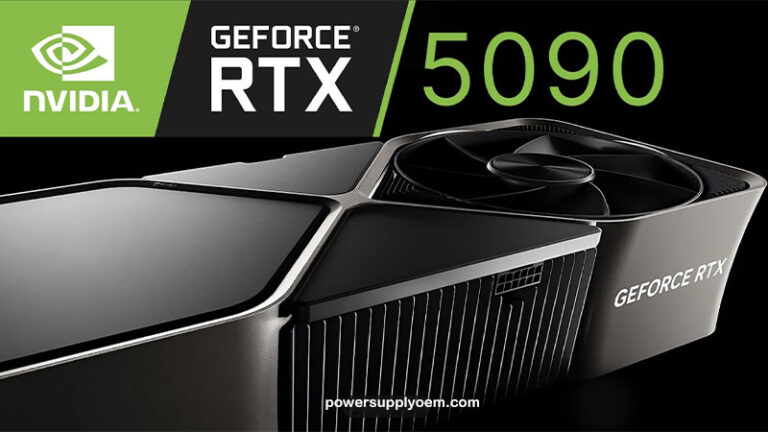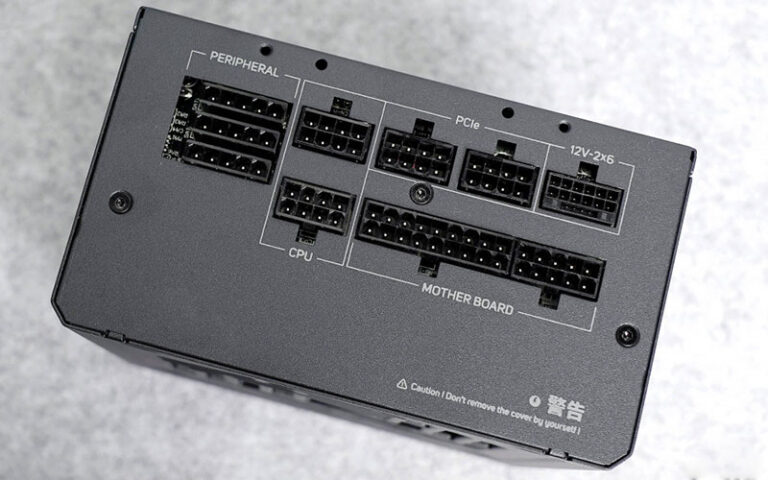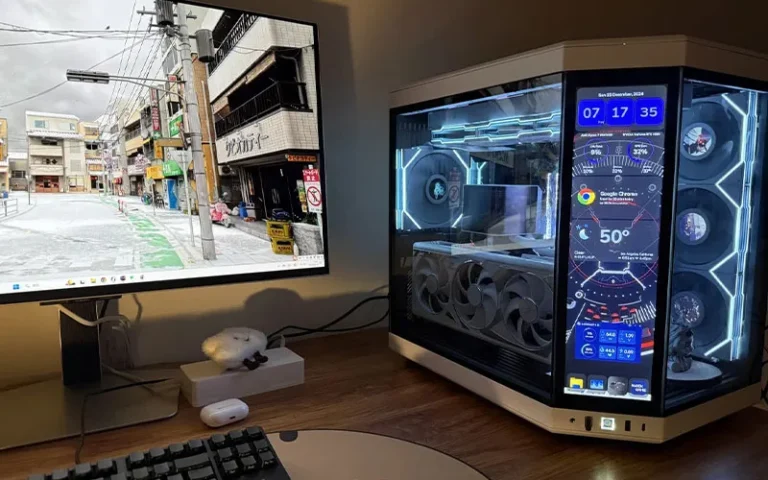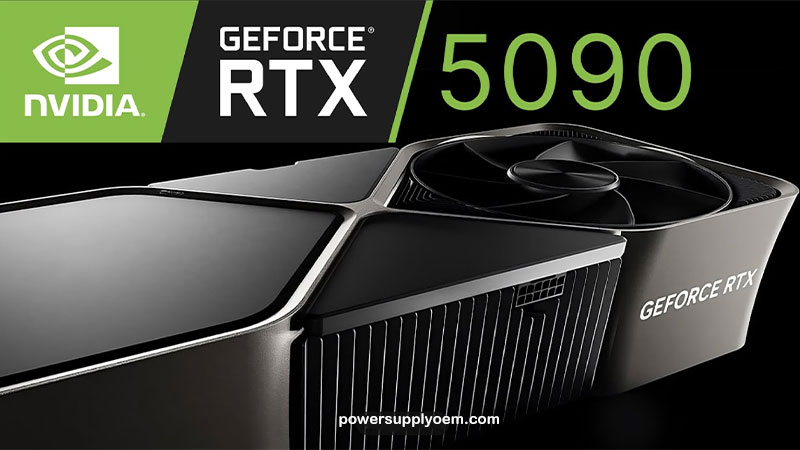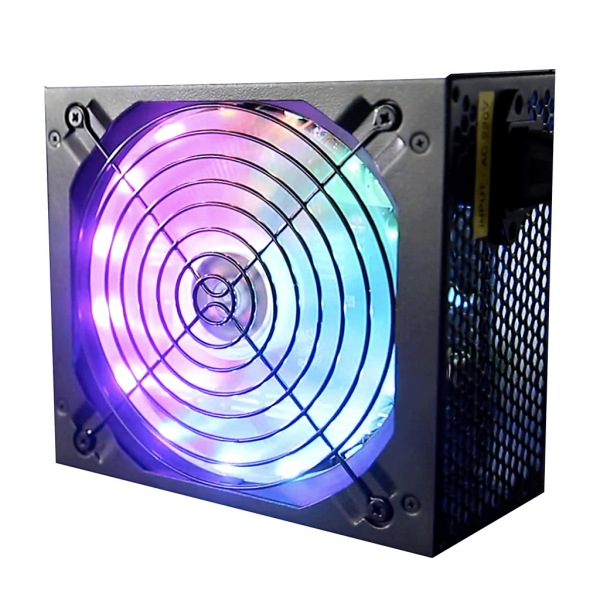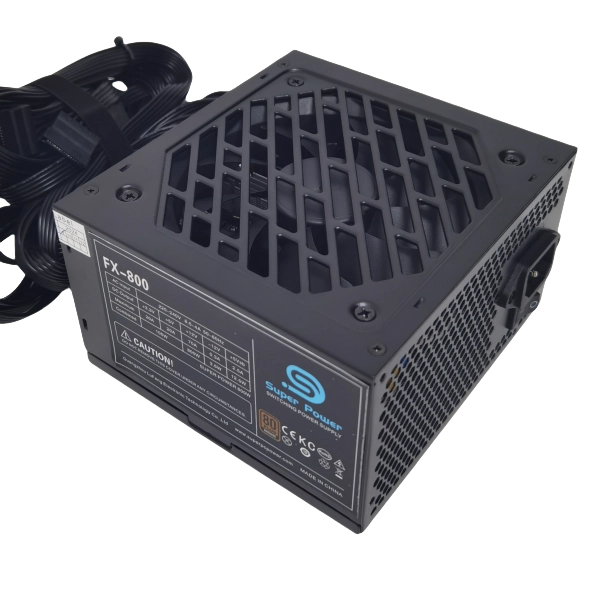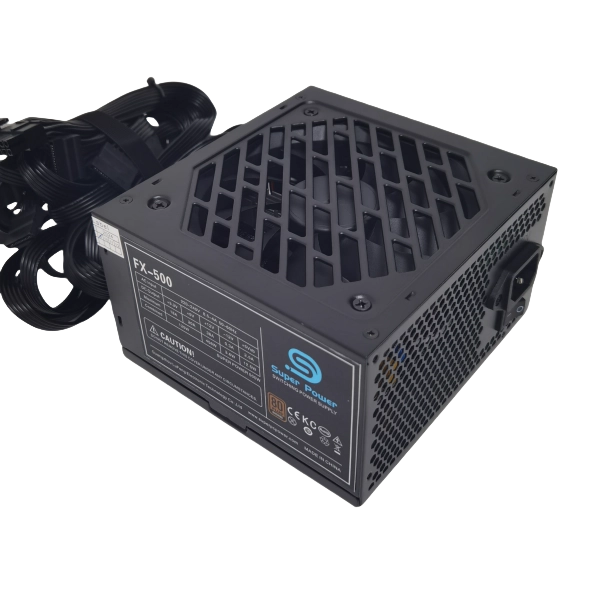-
Building E, No. 65 Xingshan North Road, Liangtian, Baisha Industrial Park, Baiyun District, Guangzhou

How To Quickly and Happily Fix PC Power Supply In 10 Steps
Troubleshooting PC Power Supply Issues: A Guide to Diagnosing and Fixing PSU Problems
This comprehensive guide provides detailed troubleshooting steps for diagnosing and fix pc power supply. Whether your computer won’t turn on, shuts down unexpectedly, or exhibits other strange behaviors, this guide will help you pinpoint the source of the problem and determine if your power supply (PSU) is to blame. We’ll cover everything from basic checks (like the power cable and power switch) to more advanced techniques using a multimeter. This guide is essential reading for anyone experiencing power problems with their PC and wanting to understand how to effectively troubleshoot and resolve them.
Table of Contents
1. Understanding the Role of the PSU in Your PC
The power supply unit (PSU) is the heart of your PC’s electrical system. It converts the alternating current (AC) power from your wall outlet into the direct current (DC) power that your computer’s internal components require. The PSU provides the necessary power to the motherboard, CPU, graphics card, storage devices, and other peripherals.
A malfunctioning power supply can lead to a wide range of problems, including:
- System not powering on.
- Random shutdowns or restarts.
- System freezes or crashes.
- Burning smells or unusual noises.
- Component damage.
Understanding the PSU’s critical role helps emphasize the importance of troubleshooting power problems effectively.
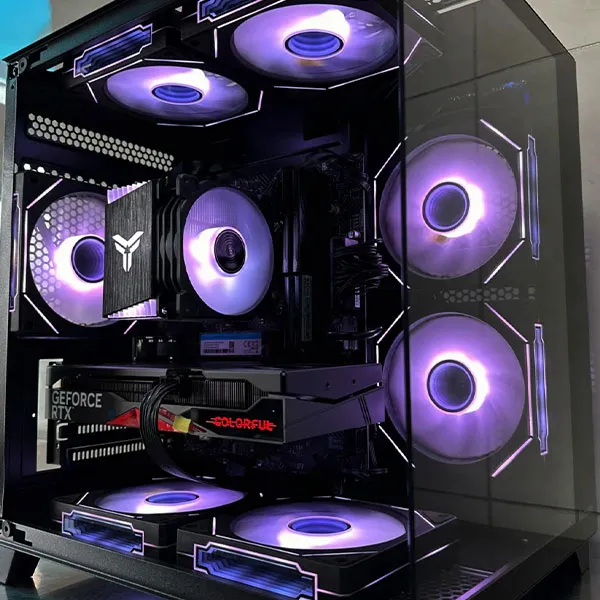
2. Initial Checks: The Obvious (But Often Overlooked) Steps
Before diving into more complex troubleshooting, it’s essential to check the basics:
- Power Cord: Ensure the power cord is securely connected to both the PSU and the wall outlet. Try a different power cable to rule out a faulty cable. It is crucial to be sure the PC is receiving power. Check if the power cable is faulty.
- Wall Socket: Verify that the wall socket is providing power. Try plugging another device into the same socket to confirm it’s working.
- Power Switch: Make sure the power switch on the back of the PSU is in the “on” position. This switch is often overlooked, but it can prevent the PC from powering on if it’s accidentally switched off.
- Surge Protector/UPS: If you’re using a surge protector or uninterruptible power supply (UPS), ensure it’s turned on and functioning correctly. Try plugging your PC directly into the wall outlet to bypass the surge protector/UPS temporarily.
These simple checks can often resolve power problems without requiring any further troubleshooting.
3. Inspecting Internal Connections: Loose Cables and Components
If the basic checks don’t resolve the issue, it’s time to open your PC case (after powering down and unplugging it) and inspect the internal connections:
- Motherboard Power Connectors: Ensure the main 24-pin ATX connector and the 4-pin or 8-pin CPU power connector are securely connected to the motherboard. These connectors provide power to the motherboard and CPU, and loose connections can prevent the system from powering on. Check for any loose connections.
- Graphics Card Power Connectors: If you have a dedicated graphics card, make sure the PCIe power connectors (6-pin or 8-pin) are securely connected.
- Storage Device Power Connectors: Check the SATA power connectors to your hard drives and SSDs.
- Reseat Components: Try reseating components like the graphics card, RAM modules, and expansion cards. Sometimes, a poorly seated component can cause power-related issues.
- Signs of physical damage: Look at the motherboard to see if there are any signs of physical damage.
Loose connections are a common cause of power problems, so carefully inspecting and reseating all internal connections is a crucial troubleshooting step.
4. Testing with a Multimeter: Measuring Voltages
A multimeter is a versatile tool that can measure voltage, current, and resistance. You can use a multimeter to check the output voltages of your PSU, but this requires some technical knowledge and caution.
WARNING: Working with electricity can be dangerous. If you’re not comfortable working with a multimeter and electrical components, it’s best to seek professional help. There can be high voltage.
Here’s a simplified overview of how to test PSU voltages with a multimeter:
- Disconnect: Power down your computer, unplug it from the wall, and disconnect all power connectors from the motherboard and other components.
- Prepare the PSU: You’ll need to “jump-start” the PSU to turn it on without being connected to the motherboard. This is typically done by shorting the green wire (PS_ON) and a black wire (COM) on the 24-pin ATX connector using a paperclip or a jumper wire.
- Set the Multimeter: Set your multimeter to measure DC voltage.
- Measure Voltages: Touch the multimeter probes to the appropriate pins on the PSU connectors to measure the voltages. You should see readings close to the expected values (e.g., +3.3V, +5V, +12V). The 5v rail is crucial.
- Interpret Results: Significant deviations from the expected voltages indicate a problem with the PSU. 12v power is used for many components.
This method provides a more accurate assessment of the PSU’s health than just observing symptoms.
5. Using a Power Supply Tester: A Simpler Approach
A power supply tester is a dedicated device designed to simplify PSU testing. It’s much easier and safer to use than a multimeter for most users.
Here’s how to use a power supply tester:
- Disconnect: Power down your computer, unplug it from the wall, and disconnect all power connectors from the motherboard and other components.
- Connect the Tester: Plug the PSU’s connectors (24-pin ATX, 4/8-pin CPU, PCIe, SATA, Molex) into the corresponding sockets on the power supply tester.
- Power On: Plug the power cable into the PSU and turn on the power switch on the back of the PSU. The power supply tester should power on and display the voltage readings for each connector.
- Interpret Results: The tester will typically have LEDs or an LCD screen that indicates whether the voltages are within the acceptable range. Any failed readings or warnings indicate a problem with the PSU.
A power supply tester is a convenient and user-friendly tool for quickly checking the basic functionality of a PSU.
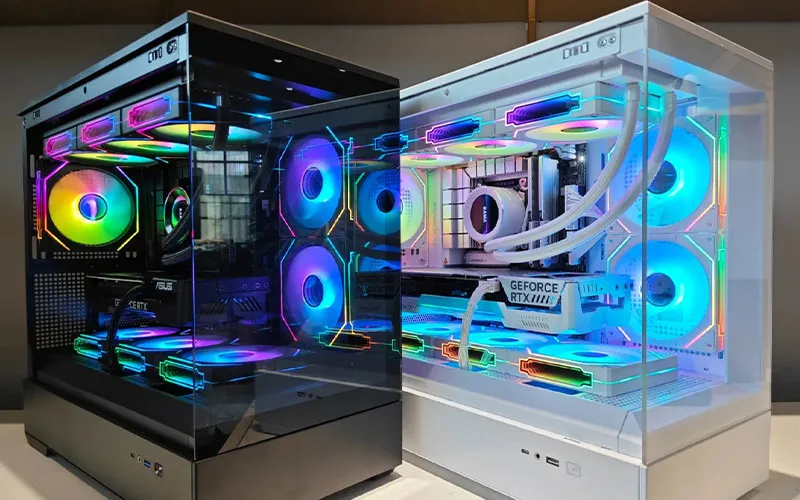
6. Identifying Common PSU Failure Symptoms
Here’s a summary of common PSU failure symptoms and their potential causes:
| Symptom | Potential Cause |
| System won’t power on | Dead PSU, faulty power cable, power switch issue, motherboard problem |
| Random shutdowns or restarts | PSU overheating, insufficient wattage, faulty PSU components, motherboard problem |
| System freezes or crashes | Unstable power from PSU, overheating, motherboard problem, driver issues |
| Burning smell or unusual noises | Failing PSU components, overheating |
| Peripherals randomly disconnecting | PSU struggling to provide enough power, faulty PSU, motherboard problem |
| Blue Screen of Death (BSOD) | Power issues, driver problems, hardware failure (including PSU) |
| The PSU fan is not running or excessively noisy | PSU fan failure, dust buildup, PSU overheating, PSU components are starting to fail |
If you’re experiencing any of these symptoms, it’s essential to troubleshoot your power supply to determine if it’s the source of the issue.
7. When to Replace Your PSU: Knowing the Limits of Troubleshooting
While troubleshooting can help you identify power supply issues, there are situations where replacing the PSU is the best or only solution:
- Confirmed PSU Failure: If you’ve tested the PSU with a multimeter or power supply tester and confirmed that it’s not providing the correct voltages, it needs to be replaced.
- Multiple Symptoms: If your system is exhibiting multiple symptoms of a failing PSU (e.g., random shutdowns, strange noises, burning smell), it’s likely time to replace it.
- Old PSU: If your PSU is more than 5-7 years old and you’re experiencing power problems, it might be nearing the end of its lifespan. Replacing it proactively can prevent potential data loss or hardware damage.
- Upgrading Components: If you’re upgrading to more power-hungry components (e.g., a new graphics card), your old power supply might not have enough wattage. It might be wise to get a new PSU.
Don’t try to repair a faulty PSU yourself, as this can be dangerous due to the high voltages involved. Replacing it is the safest and most reliable solution.
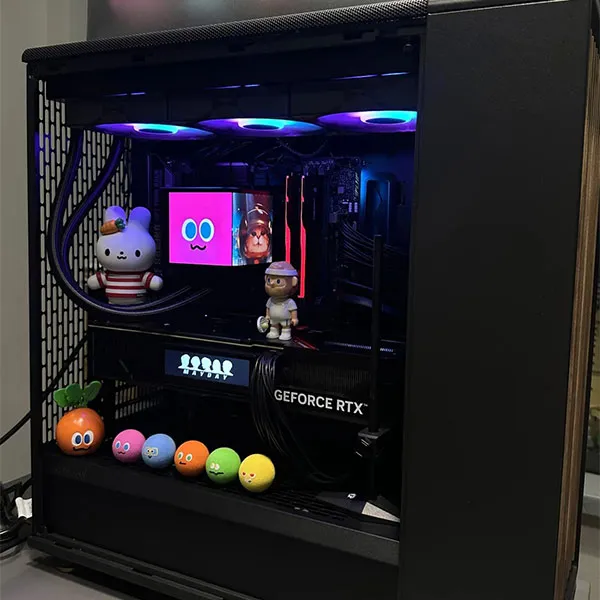
8. OEM Power Supplies: The Advantages of a Direct Partnership
As an OEM (PC power supply, ATX power supply, 80 Plus Gold) manufacturer, we understand the complexities of power supply design and manufacturing. We provide service for a number of clients, such as:
- PC Power Supply Brands: We work closely with established brands to offer the best solutions.
- 3C Supermarkets: We can deliver high quality power supplies at low prices.
- Power Supply Wholesalers: We provide a reliable supply chain for their needs.
- Agents: Our team is prepared to offer any and all support.
- Large Internet Cafes: We can handle bulk orders, and fulfill them quickly.
Partnering with us as your power supply provider offers several advantages:
- Customization: We can tailor power supplies to your exact specifications, including wattage, form factor, connectors, cabling, and branding.
- Quality: We use high-quality components and rigorous testing procedures to ensure the reliability and performance of our power supplies.
- Cost-Effectiveness: Buying directly from the manufacturer often results in better pricing, especially for bulk orders.
- Expert Support: Our team provides technical support and guidance throughout the design and manufacturing process.
Working directly with an OEM manufacturer gives you greater control over the quality and specifications of your power supplies. Our ATX Power Supply is a great example.
9. Customized Power Solutions for Your Specific Needs
We offer a wide range of power supply options, including:
- ATX Power Supplies: The standard form factor for most desktop PCs. Check out our PC POWER SUPPLY.
- SFX Power Supplies: Compact PSUs for small form factor PCs.
- FLEX Power Supplies: Even smaller PSUs for specialized applications. We are proud of our FLEX Power Supply.
- Custom Power Supplies: We can design and manufacture power supplies to your precise requirements.
Our team will work closely with you to understand your needs and recommend the optimal power supply solution, ensuring it meets your performance, reliability, and budget requirements.
10. Case Studies: Real-World Power Supply Troubleshooting Scenarios Fix PC Power Supply
Here are a few case studies illustrating common power supply problems and their solutions:
- Case Study 1 (System Won’t Power On): A user reported that their computer wouldn’t turn on. Initial checks revealed the power cable was securely connected and the wall outlet was working. The power switch on the back of the PSU was also in the “on” position. Further investigation using a power supply tester confirmed that the PSU was dead and needed to be replaced.
- Case Study 2 (Random Shutdowns): A gamer experienced random shutdowns during gameplay. Monitoring temperatures revealed that the CPU and GPU were not overheating. The issue was traced to an underpowered PSU that couldn’t handle the power demands of the system under load. Replacing the PSU with a higher-wattage unit resolved the problem.
- Case Study 3 (Burning Smell): A user noticed a burning smell coming from their computer. They immediately shut down the system and unplugged it. Upon inspection, the PSU was found to be the source of the smell, with visible signs of damage. The PSU was replaced to prevent further damage to the system.
- Case Study 4 (Wholesaler): A wholesaler was having problems keeping their shelves stocked. They reached out to us, and now have no problems with inventory.
These case studies demonstrate the importance of systematic troubleshooting and the potential consequences of ignoring power supply problems.
Frequently Asked Questions
What are the most common signs of a failing PSU?
The most common signs include random shutdowns or restarts, system freezes or crashes, burning smells, unusual noises, and the system not powering on at all.
Can I test my PSU without any special tools?
You can perform basic checks like inspecting cables and connections, but for definitive testing, you’ll need a multimeter or a power supply tester.
Is it safe to open and repair a PSU myself?
No, it’s generally not safe to open and repair a PSU yourself due to the high voltages involved. It’s best to replace a faulty PSU.
How long should a PSU last?
A good quality PSU can last 5-10 years or even longer, depending on usage, environmental conditions, and the quality of the unit itself.
What does the “80 Plus” rating on a PSU mean?
The 80 Plus rating indicates a PSU’s energy efficiency. A higher rating (e.g., 80 Plus Gold) means the PSU is more efficient, wasting less energy as heat.
How do I test whether or not the PSU is getting power?
First, check to see if the outlet is working.
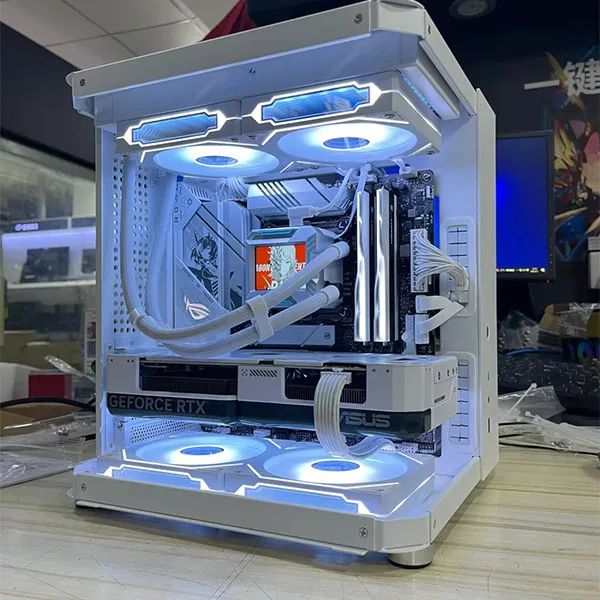
Summary
- Troubleshooting PC power supply issues requires a systematic approach, starting with basic checks and progressing to more advanced techniques.
- The PSU is a critical component that provides power to all other parts of your computer.
- Common power supply problems include the system not powering on, random shutdowns, system freezes, burning smells, and unusual noises.
- Inspect internal connections for loose cables and components.
- Use a multimeter or a power supply tester for more definitive PSU testing.
- Replace your PSU if it’s confirmed to be faulty, exhibiting multiple symptoms, or is nearing the end of its lifespan.
- Choose a replacement PSU based on wattage, form factor, efficiency rating, connectors, and warranty.
- As an OEM power supply manufacturer, we offer customized solutions tailored to your specific needs.
- Partnering with us provides access to expertise, quality, cost-effectiveness, and customization options.
- We offer a range of power supplies, including ATX, SFX, FLEX, and custom designs. Our SFX Power Supply has many options.
- Real-world case studies demonstrate the importance of effective power supply troubleshooting.
- These troubleshooting tips will allow you to solve most issues.
- If the PC won’t turn on, start with the power supply.

